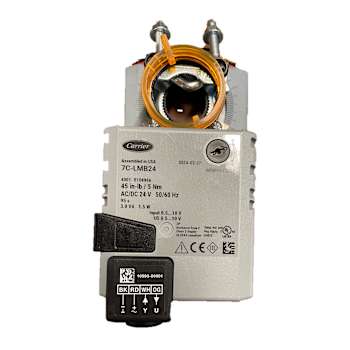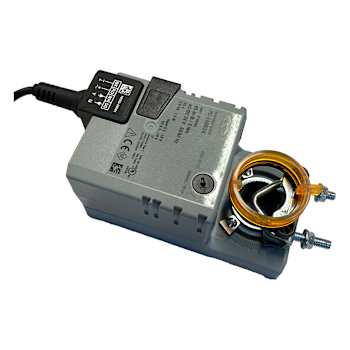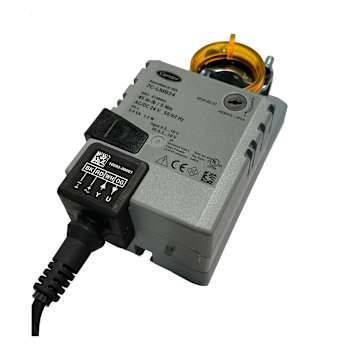ClimaVision Damper Actuator
7C-LMB-24-1
Basic Non Fail-Safe modulating actuator for controlling dampers in ClimaVision VVT or VAV applications.
- Torque motor 45 in-lb [5 Nm]
- Nominal voltage AC/DC 24 V
- Control modulating
- Position feedback 0...10 V
The actuator is not provided with and does not require any limit switches but is electronically protected against overload. The anti-rotation strap supplied with the actuator will prevent lateral movement.
The LMB series provides 95°of rotation and a visual indicator indicates position of the actuator. When reaching the damper or actuator end position, the actuator automatically stops. The gears can be manually disengaged with a button on the actuator cover.
The 7C-LMB24.1 actuator uses a sensor less, brushless DC motor, which is controlled by an Application Specific Integrated Circuit (ASIC). The ASIC monitors and controls the actuator’s rotation and provides a digital rotation sensing (DRS) function to prevent damage to the actuator in a stall condition. Power consumption is reduced in holding mode.
Add-on auxiliary switches or feedback potentiometers are easily fastened directly onto the actuator body for signaling and switching functions.
- Torque motor 45 in-lb [5 Nm]
- Nominal voltage AC/DC 24 V
- Control modulating
- Position feedback 0...10 V
The actuator is not provided with and does not require any limit switches but is electronically protected against overload. The anti-rotation strap supplied with the actuator will prevent lateral movement.
The LMB series provides 95°of rotation and a visual indicator indicates position of the actuator. When reaching the damper or actuator end position, the actuator automatically stops. The gears can be manually disengaged with a button on the actuator cover.
The 7C-LMB24.1 actuator uses a sensor less, brushless DC motor, which is controlled by an Application Specific Integrated Circuit (ASIC). The ASIC monitors and controls the actuator’s rotation and provides a digital rotation sensing (DRS) function to prevent damage to the actuator in a stall condition. Power consumption is reduced in holding mode.
Add-on auxiliary switches or feedback potentiometers are easily fastened directly onto the actuator body for signaling and switching functions.








